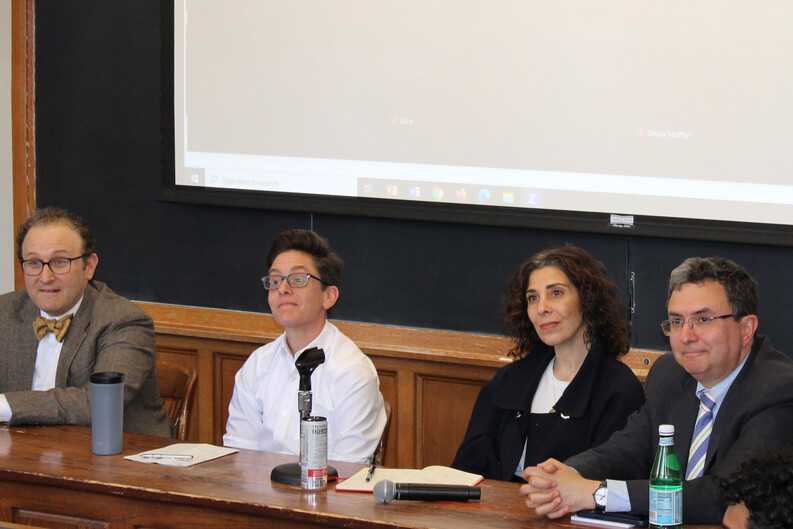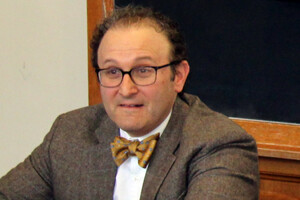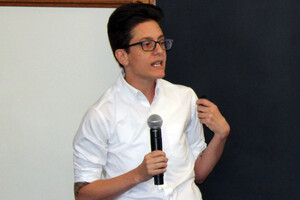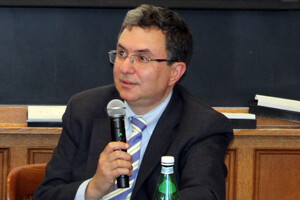Government Drug Purchases A Significant Investment, Though Prices for Patients Remain High, Experts Say


With brand name drugs growing more expensive and remaining out of reach for many, should government buy costly, high-value medications to help patients access them more easily? The Solomon Center for Health Law and Policy brought together four experts in prescription drug policy to answer that question. At an April 15 panel, speakers discussed how the government could operationalize drug purchasing in light of existing patents, regulations, and laws. The conversation focused on drugs for hepatitis C treatment and HIV prevention.
Aaron Kesselheim, Professor of Medicine at Harvard Medical School and Visiting Professor of Law at Yale Law School, began the conversation by explaining how government drug purchasing fits into U.S. prescription drug policy. He stressed that drugs are one of the most cost-effective health interventions and that government drug purchases are a substantial public investment in drug research and development.

For example, he said, the U.S. government invested $61 million over three decades in development of hepatitis C treatment sofosbuvir and made additional investments in virology labs, drug discovery, and clinical trials related to the drug. Despite this public investment, drugmakers have not lowered its cost. In 2014, a course of sofosbuvir cost $84,000 and the combination drug ledipasvir/sofosbuvir (brand name Harvoni) was $95,000.
Kesselheim also cited the example of HIV prevention drug emitricitabine/tenofovir, known by the brand name Truvada and approved for pre-exposure prophylaxis, commonly called PrEP, in 2012. There was $143 million in government funding directly linked to PrEP development. Trugmaker Gilead set the initial list price for Truvada at $1,700 per month, yielding the company $3 billion per year for that medication alone.
Amy Killelea, Owner of Killelea Consulting and Senior Associate in Health Policy and Management at Johns Hopkins Bloomberg School of Public Health, then turned the discussion to PrEP. The public health community expected PrEP to be a turning point for the HIV/AIDS epidemic. But access, especially among Black and Hispanic populations, is still an issue. Killelea attributed this lack to access to many factors, including PrEP’s high price for patients, health system fragmentation, Gilead’s strategies to retain patent protections, and policy gaps that permit PrEP’s high prices. Killelea said one possible solution is the National PrEP program, which would allow the U.S. government to negotiate a fairer price for PrEP and get it to the broader public.

Rena Conti, Dean’s Research Scholar and Associate Professor of Markets, Public Policy, and Law at Boston University Questrom School of Business, then brought the discussion back to hepatitis C. She described the burden that expensive drugs like direct-acting antivirals for hepatitis-C place on states. Some states have attempted value-based pricing or fixing the price of drugs through negotiations with the pharmaceutical manufacturers. But is not an attractive option for drugs of significant value, she noted. Conti described an alternate solution, the subscription model, which permits the state to negotiate a lower price with drug manufacturers in exchange for promising to identify the populations of patients who are candidates for treatment.

Finally, Joshua Sharfstein, Vice Dean for Public Health Practice and Community Engagement and Professor of Practice at Johns Hopkins Bloomberg School of Public Health, brought together the examples of direct-acting antivirals and PrEP. He stressed that during the COVID-19 pandemic, the government mass purchased drugs to get them into the hands of the public quickly and affordably. Government purchasing of certain medications like direct-acting antivirals is a win-win, he said. It raises the volume of sales, whicb benefits both the public and the manufacturer.
However, he noted, it becomes more complicated with PrEP and generic options now available.
“It’s ingrained in us that we pay for drugs by the pill,” Sharfstein said. “We do not have to pay for drugs by the pill. We can pay by the population.”
The event was co-sponsored by the Yale Health Law and Policy Society (YHeLPS).


